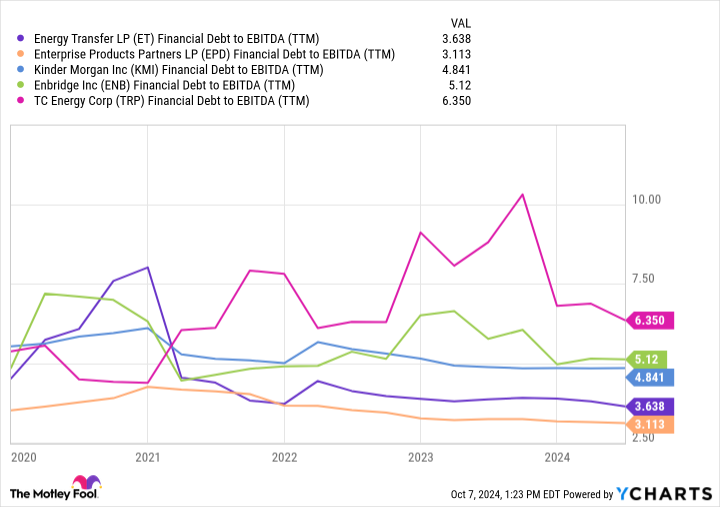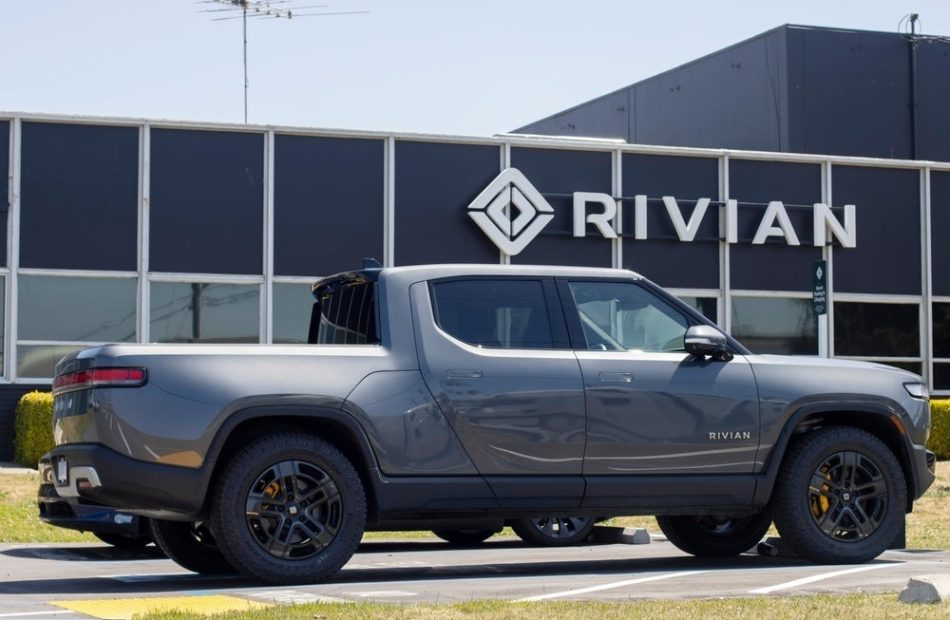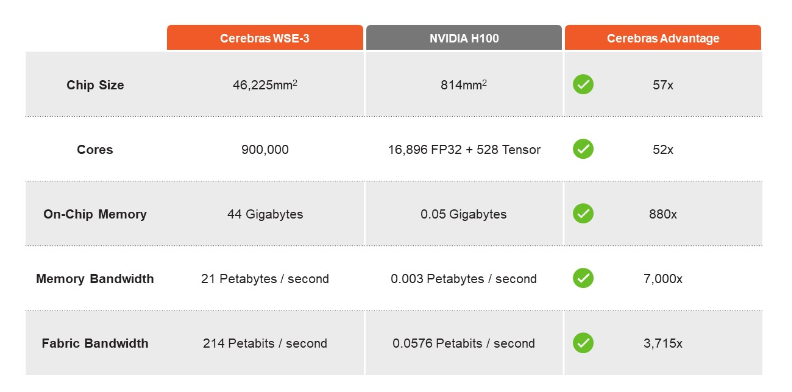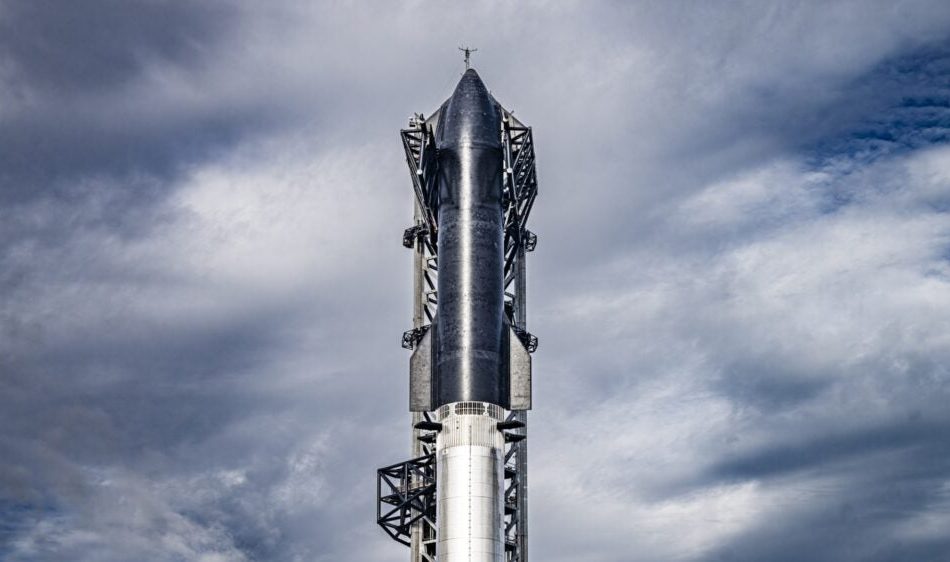Columbus Day trading, Netflix and bank earnings, and economic data: What to watch in the markets this week
After a hectic week filled with major earnings reports, an AI summit, robotaxis, and key inflation data, this coming week will be shorter but still significant.
Here’s what’s on the agenda for the week ahead.
Is the stock market closed on Columbus Day?
No, the New York Stock Exchange (ICE) and the Nasdaq (NDAQ) will remain open Monday during Columbus Day, also known as Indigenous Peoples’ Day.
But bond markets will be closed.
Big bank earnings
Several major banks and financial institutions are set to release their quarterly earnings, offering valuable insights into their performance and broader economic trends. Goldman Sachs (GS), Bank of America (BAC), and Citigroup (C) will kick off the week with their earnings reports Tuesday, shedding light on how well these financial giants have navigated recent market volatility.
Discover Financial Services (DFS) and Citizens Financial Group (CFG) will reveal their financial health Wednesday, providing a closer look at consumer credit trends and regional banking performance. On Thursday, earnings from Morgan Stanley (MS), Blackstone (BX), and M&T Bank Corporation (MTB) will follow, giving insight into investment banking, private equity, and regional banking sectors. Finally, the week closes Friday with American Express (AXP) reporting its earnings.
Netflix and other important earnings
On Tuesday, Johnson & Johnson (JNJ), UnitedHealth Group (UNH), and Walgreens (WBA) will release their earnings reports before the opening bell, offering a glimpse into the healthcare and insurance sectors. On Thursday, the spotlight shifts to technology and travel, as Taiwan Semiconductor Manufacturing Company (TSM), Netflix (NFLX), American Airlines (AAL), and Alaska Airlines (ALK) will release their financial report cards.
Macroeconomic data to watch
While this week won’t bring any blockbuster macroeconomic reports, several key indicators will still provide valuable insights into the health of the U.S. economy. On Wednesday, the Import Price Index for September will be released, offering a glimpse into inflationary pressures from imported goods.
On Thursday, initial jobless claims will provide an updated snapshot of the U.S. labor market. The release of U.S. retail sales data will shed light on consumer spending patterns, a key driver of economic growth. Industrial production data will offer insights into manufacturing output and factory activity nationwide. Additionally, homebuilder confidence for October will gauge the housing market’s health, providing an outlook on construction activity and the broader real estate sector.
Kremlin Critic Warns Russia Could Grow Stronger If Trump Wins White House: 'Will Basically Be Handing Some Type Of Military Victory'
American financier and Kremlin critic Bill Browder on Saturday warned of the potential global ramifications of a second term for former President Donald Trump, citing the possibility of a weakened NATO and increased Russian aggression.
What Happened: Browder, during an interview on MSNBC, expressed concerns about the potential consequences of a Trump re-election. He highlighted the possibility of Trump cutting off military aid to Ukraine, which could potentially hand Russia a military victory.
“This is a terrifying moment for the whole world really in the sense that if Donald Trump becomes the next president, he will cut off military aid for Ukraine,” Browder said.
“Ukraine is totally dependent on U.S. military aid and that will basically be handing some type of military victory to Russia and to Putin.”
Browder also pointed to Trump’s previous discussions with Russian President Vladimir Putin during significant global events, such as the COVID-19 pandemic and Russia’s invasion of Ukraine. He suggested that Putin’s aggression could escalate under a second Trump presidency.
“Putin has designs on other parts of Europe. He’s looking at Estonia, Latvia and Lithuania who are NATO members,” Browder said. “If he gets involved with those countries in a military way then we have a treaty to defend those countries.”
See Also: Kamala Harris Advises On Howard Stern Show: Don’t Get Stoned Before Visiting The Sphere In Las Vegas
“And then the question is would Donald Trump honor that treaty obligation. And he’s made all sorts of noises in his previous presidency about not liking to be a part of NATO,” Browder added.
“This is a scary moment because we could be in a sort of World War II situation if Putin can run roughshod over Europe because he no longer has to worry about American aid for Ukraine,” Browder said.
Why It Matters: Browder’s concerns about Trump’s relationship with Putin are not unfounded. An upcoming book by journalist Bob Woodward alleges that Trump and Putin have maintained secret communication since 2021, with as many as seven conversations. This suggests a continued rapport between the two leaders, despite Trump’s departure from office.
Former White House Russia expert Fiona Hill has also suggested earlier that Putin views Trump as an asset and has been strategically manipulating him for some time. This perception of Trump’s potential return to power as a valuable card in international affairs could further embolden Putin’s actions, as Browder has warned.
Moreover, Trump has previously received praise from Putin for his Ukraine peace plan, which could further complicate the situation in Eastern Europe if Trump were to return to the White House.
This content was partially produced with the help of Benzinga Neuro and was reviewed and published by Benzinga editors.
Image via Wikimedia Commons
Market News and Data brought to you by Benzinga APIs
© 2024 Benzinga.com. Benzinga does not provide investment advice. All rights reserved.
Don't Give Up on Dividends: 3 Dividend Stocks That Reward You Through Thick and Thin
This year, some notable companies have cut or eliminated their dividends. For example, former stalwarts Walgreens and 3M ended decades-long streaks of dividend growth with deep cuts to their payouts. It’s a situation that can make some investors want to give up altogether on income investing.
However, while some formerly reliable companies have disappointed investors on the dividend front in recent years, others have continued to make their payments no matter what. Enterprise Products Partners (NYSE: EPD), Oneok (NYSE: OKE), and NextEra Energy (NYSE: NEE) stand out to a few Fool.com contributors for their dividend stability. Here’s why you should consider adding them to your portfolio.
Enterprise Products Partners is built to pay you well
Reuben Gregg Brewer (Enterprise Products Partners): For 26 consecutive years, midstream energy giant Enterprise Products Partners has increased its distributions. That’s a huge commitment to its unitholders, but there’s more for income investors to like here than just the distribution history. It all starts with its master limited partnership structure, which is designed to pass income on to investors in a tax-advantaged manner. (A portion of the distribution is usually return of capital.) So down to its foundation, Enterprise is about paying its investors well.
Then, factor in its business model. Enterprise owns energy infrastructure like pipelines, storage, refining, and transportation assets that are vital to the energy sector’s operation. However, unlike other segments of the industry, the midstream segment is largely fee driven. Enterprise generates reliable cash flows based on the use of its assets, so the often-volatile prices of oil and natural gas don’t really have that big an impact on its financial results. Demand for energy, which is usually strong even when oil prices are weak, is the key determinant of Enterprise’s success.
Then there’s the fact that Enterprise has an investment-grade rated balance sheet. Moreover, its leverage is normally toward the low end of its peer group, so it is conservative on both an absolute and relative basis. Lastly, the partnership’s distributable cash flow covers its distribution 1.7 times over.
All in all, a lot would have to go wrong before Enterprise Products Partners would need to cut its distribution. It is far more likely that it will continue to grow those disbursements, albeit slowly, as its capital investment plans pan out. But slow and steady distribution growth combined with a huge 7% yield will probably sound like music to most dividend investors’ ears.
Over a quarter century of growth and stability (and more growth coming down the pipeline)
Matt DiLallo (Oneok): Pipeline giant Oneok has proven its dividend durability over the decades. It has achieved more than a quarter century of dividend stability. While it hasn’t increased its payment every year during that period, it has a strong track record on payout hikes. Since 2013, Oneok has produced peer-leading total dividend growth of more than 150%. That’s impressive, considering that the world experienced two notable periods of oil price volatility during that period.
Oneoke has delivered sustainable earnings growth over the years. Its portfolio of pipelines and related midstream infrastructure generates predictable fees backed by long-term contracts and government-regulated rate structures. Its earnings grow as the volumes flowing through that infrastructure increase due to production growth, organic expansion projects, and acquisitions.
The company has been on an acquisition-fueled expansion binge in recent years. Last year, it bought Magellan Midstream Partners in a transformational $18.8 billion deal that increased its diversification and cash flow. The highly accretive deal will add an average of more than 20% to its free cash flow per share through 2027. That supports management’s view that Oneok will be able to grow its dividend by 3% to 4% annually during that period while also repurchasing shares and reducing its leverage ratio.
Oneok followed that up with a $5.9 billion deal to buy Medallion Midstream and a meaningful interest in EnLink Midstream this August. The transaction will be immediately accretive to its free cash flow and capital allocation strategy. After closing that deal, Oneok plans to buy the rest of EnLink, further boosting its cash flow per share. The company also expects to complete additional organic expansion projects, further enhancing its growth rate.
The midstream giant’s investments will help fuel its dividend growth for the next several years, even if there’s another market downturn. Those features make Oneok a great stock to buy for those seeking reliable dividends.
A steady dividend grower
Neha Chamaria (NextEra Energy): NextEra Energy, which has a yield of 2.6% at its current stock price, has rewarded its shareholders through thick and thin, and management is determined to continue doing so. The utility and clean energy giant has paid regular dividends for decades, but more importantly, increased them steadily over time. Between 2003 and 2023, the compound annual growth rate (CAGR) of NextEra Energy’s dividend was nearly 10%, backed by a 9% CAGR in its adjusted earnings per share (EPS) and an 8% CAGR in operating cash flow during the period.
NextEra Energy operates two businesses — Florida Power & Light Company (the largest electric utility in Florida) and clean energy company NextEra Energy Resources (the world’s largest generator of wind and solar energy). So while its regulated utility business generates stable cash flows, clean energy is where its growth largely comes from.
NextEra Energy expects its adjusted EPS to grow at an annualized rate of 6% to 8% through 2027, and expects annual dividend hikes of around 10% through 2026 as it pumps billions of dollars into both businesses.
More specifically, NextEra Energy plans to spend over $34 billion on Florida Power & Light between 2024 and 2027 and more than $65 billion on renewable energy over the next four years. That’s massive, and if done right, should steadily boost NextEra Energy’s earnings and cash flows to support bigger dividends for years, regardless of how the economy fares.
Don’t miss this second chance at a potentially lucrative opportunity
Ever feel like you missed the boat in buying the most successful stocks? Then you’ll want to hear this.
On rare occasions, our expert team of analysts issues a “Double Down” stock recommendation for companies that they think are about to pop. If you’re worried you’ve already missed your chance to invest, now is the best time to buy before it’s too late. And the numbers speak for themselves:
-
Amazon: if you invested $1,000 when we doubled down in 2010, you’d have $21,022!*
-
Apple: if you invested $1,000 when we doubled down in 2008, you’d have $43,329!*
-
Netflix: if you invested $1,000 when we doubled down in 2004, you’d have $393,839!*
Right now, we’re issuing “Double Down” alerts for three incredible companies, and there may not be another chance like this anytime soon.
*Stock Advisor returns as of October 7, 2024
Matt DiLallo has positions in 3M, Enterprise Products Partners, and NextEra Energy. Neha Chamaria has no position in any of the stocks mentioned. Reuben Gregg Brewer has positions in 3M. The Motley Fool has positions in and recommends NextEra Energy. The Motley Fool recommends 3M, Enterprise Products Partners, and Oneok. The Motley Fool has a disclosure policy.
Don’t Give Up on Dividends: 3 Dividend Stocks That Reward You Through Thick and Thin was originally published by The Motley Fool
Former Tesla Enthusiast Embraces Rivian After R1T Survives Hurricane
Former Tesla aficionado Michael Cusick has shifted his loyalty to Rivian Automotive RIVN following the survival of his Rivian R1T electric truck in Hurricane Helene.
What Happened: Cusick, a resident of Asheville, North Carolina, was a staunch supporter of Tesla Inc TSLA having owned and extensively driven a Model 3. However, his experience with the Rivian R1T during Hurricane Helene, which wreaked havoc in the southeast, including Asheville, has led him to switch his allegiance to Rivian.
According to the report by Business Insider, after weighing several options including the Tesla Cybertruck and the Chevy Silverado EV, Cusick purchased a Rivian R1T in June 2024.
He was attracted to the Rivian R1T due to its midsize truck capabilities, its ability to traverse narrower trails, and its air suspension that provides about 2 feet of ground clearance.
During the onslaught of Hurricane Helene, Cusick’s Rivian was swallowed by floodwaters. However, once the waters subsided, he discovered his vehicle was unscathed and fully functional.
In the hurricane’s aftermath, Cusick’s Rivian R1T even functioned as a generator, powering a food truck and a chainsaw for clearing roads.
Subsequent to the incident, Rivian contacted Cusick and provided him with a loaner vehicle while his truck is inspected and potentially repaired. This experience has cemented Cusick’s commitment to Rivian. “I’m all-in on Rivian now, without a doubt,” Cusick told the outlet.
Why It Matters: This incident underscores the durability and resilience of Rivian’s electric vehicles, which could potentially boost consumer confidence in the brand.
The company’s swift response in providing a loaner vehicle also highlights their commitment to customer service. This could further enhance Rivian’s reputation and market position in the competitive electric vehicle industry.
Read Next
Mark Zuckerberg Flaunts Watches Valued at a Cybertruck’s Price
This content was partially produced with the help of Benzinga Neuro and was reviewed and published by Benzinga editors.
Market News and Data brought to you by Benzinga APIs
© 2024 Benzinga.com. Benzinga does not provide investment advice. All rights reserved.
The Newest Artificial Intelligence Stock Has Arrived — and It Claims to Make Chips That Are 20x Faster Than Nvidia
The artificial intelligence chipmaker Nvidia (NASDAQ: NVDA) has amassed close to a $3.2 trillion market cap, making it one of the world’s largest chipmakers. It now consumes more than 6% of the broader benchmark S&P 500 index. Over the last five years, Nvidia has grown annual revenue by 458% and the stock is up an incredible 2,009%. Given the potential for AI to disrupt life as we know it, it’s understandable that investors are so excited about the stock.
But the lure of these kinds of gains is naturally going to attract competition. Now, one of Nvidia’s competitors is planning an initial public offering (IPO) and claiming to manufacture chips that can vastly outperform Nvidia at a fraction of the price. Let’s take a look.
20x better than Nvidia?
Last week, the AI chipmaker Cerebras filed its registration statement with the Securities and Exchange Commission (SEC) with the intent to go public. In a press release from 2021, Cerebras said it had a valuation of $4 billion after a $250 million series F financing round. The company is targeting a $1 billion IPO at a $7 billion to $8 billion valuation.
In its registration statement, Cerebras cites Nvidia as a competitor, as well as other large AI companies such as Advanced Micro Devices, Intel, Microsoft, and Alphabet. Here is a description of what Cerebras does:
We design processors for AI training and inference. We build AI systems to power, cool, and feed the processors data. We develop software to link these systems together into industry-leading supercomputers that are simple to use, even for the most complicated AI work, using familiar ML frameworks like PyTorch. Customers use our supercomputers to train industry-leading models. We use these supercomputers to run inference at speeds unobtainable on alternative commercial technologies.
Cerebras’ pitch is that bigger is better. That’s because the company has designed a chip that is the size of a full silicon wafer, and the largest ever sold. The company believes that the size advantage leads to less time moving data. Furthermore, Cerebras has a flexible business model in which clients can buy Cerebras products to have at their facilities or through a consumption-based subscription through the company’s cloud infrastructure.
Cerebras clearly wants investors to compare, or at least associate, the company with Nvidia. Nvidia is mentioned 12 times in the registration statement. Cerebras also provides a side-by-side comparison of its Wafer-Scale Engine-3 chip versus Nvidia’s H100 graphics processing unit (GPU), which is considered the most powerful GPU on the market.
Cerebras CEO Andrew Feldman publicly said the company’s inference offering is 20 times faster than Nvidia’s at a fraction of the price. In 2023, Cerebras generated about $78.7 million of revenue, up 220% year over year. Through the first half of 2024, Cerebras has grown revenue to $136.4 million. The company still hasn’t earned a profit, having reported a nearly $67 million loss through the first half of 2024. These numbers also pale in comparison to Nvidia, which recently reported second-quarter revenue of $30 billion and a profit of roughly $16.6 billion.
Will Cerebras make a splash?
With big publicity from news publications and claims of being 20 times faster than Nvidia, I think it’s safe to say that Cerebras already has and will continue to make a splash.
Depending on the excitement investment bankers can drum up during the company’s road show and market conditions, I wouldn’t be surprised to see Cerebras go public at a higher valuation than expected. AI has been all the buzz and the IPO market has been flat for a few years now, so there could be pent-up demand on Wall Street.
Will Cerebras overtake Nvidia? Only time will tell. Its product offerings are impressive, but it still has a ways to go to get its financial profile in line with Nvidia. Furthermore, there may be some advantages to Nvidia having smaller chips and it remains to be seen whether Cerebras can compete with Nvidia’s software language CUDA — although the company does say that its software program “eliminates the need for low-level programming in CUDA.”
While everything sounds great, there is likely still a “show me” component to this story. After all, the bulk of Cerebras’ revenue comes from one customer. Nvidia also has a leading market share in the AI chip space and relationships with many large clients. Who’s to say Nvidia couldn’t use its size — and likely resource — advantage to develop a similar large wafer chip? There’s a lot left to play out, but this could be one of the more interesting developments for market watchers to pay attention to.
Don’t miss this second chance at a potentially lucrative opportunity
Ever feel like you missed the boat in buying the most successful stocks? Then you’ll want to hear this.
On rare occasions, our expert team of analysts issues a “Double Down” stock recommendation for companies that they think are about to pop. If you’re worried you’ve already missed your chance to invest, now is the best time to buy before it’s too late. And the numbers speak for themselves:
-
Amazon: if you invested $1,000 when we doubled down in 2010, you’d have $21,266!*
-
Apple: if you invested $1,000 when we doubled down in 2008, you’d have $43,047!*
-
Netflix: if you invested $1,000 when we doubled down in 2004, you’d have $389,794!*
Right now, we’re issuing “Double Down” alerts for three incredible companies, and there may not be another chance like this anytime soon.
*Stock Advisor returns as of October 7, 2024
Suzanne Frey, an executive at Alphabet, is a member of The Motley Fool’s board of directors. Bram Berkowitz has no position in any of the stocks mentioned. The Motley Fool has positions in and recommends Advanced Micro Devices, Alphabet, Microsoft, and Nvidia. The Motley Fool recommends Intel and recommends the following options: long January 2026 $395 calls on Microsoft, short January 2026 $405 calls on Microsoft, and short November 2024 $24 calls on Intel. The Motley Fool has a disclosure policy.
The Newest Artificial Intelligence Stock Has Arrived — and It Claims to Make Chips That Are 20x Faster Than Nvidia was originally published by The Motley Fool
Mary Trump: 'Because Donald Is A World-Class Hypocrite, It Turns Out His Interviews Have Been Edited'
On Friday former President Donald Trump called for the revocation of the broadcasting license of CBS, alleging widespread corruption and disinformation among media outlets.
What Happened: Trump declined to partake in a customary pre-election interview on CBS’ 60 Minutes due to the network’s commitment to fact-checking his statements.
He has since called for CBS to be stripped of its broadcasting license and proposed that all other broadcast licenses should be auctioned to the highest bidder. The former president’s ire was ignited by the airing of two different versions of a response given by Vice President Kamala Harris on a question about Israel.
Trump accused 60 Minutes and CBS of perpetrating fraud by editing the interview for clarity, which he branded as “the Single Biggest scandal in Broadcast History.”
During an event in Detroit, Trump informed the audience that all networks are “crooked as hell” and should be deprived of their licenses, a comment that was greeted with applause.
Talking about Trump’s stance on the media outlet, his niece Mary Trump said in a Substack post that “because Donald is a world-class hypocrite, it turns out his interviews have been edited in order to make him look better.”
“For years, Donald has railed against the press, calling them the “the enemy of the people.” He singles out individual reporters, especially women, by name and calls them stupid when they ask probing questions, or don’t flatter him enough,” she said in the post.
“There is plenty of evidence, from misleading New York Times headlines that whitewash his authoritarianism, racism, and criminality, to the abysmal performances by moderators at both the CNN and CBS debates, that Donald’s working the refs has succeeded,” Mary Trump continued.
She also said that “too many reporters and news organizations fear Donald and have decided that the best way to protect themselves is to appease him.”
“Unfortunately, doing so makes it impossible for them to do their jobs—which, at this critical time in American history, is to educate the American people about, and alert them to, the unique danger a second Trump administration poses,” Mary Trump said.
Also Read: Mary Trump: ‘Donald’s Narcissistic Injury Is So Great That He Has Essentially Stopped Campaigning’
Why It Matters: This is not the first time that Trump has been at odds with the media. Throughout his presidency, he has been known for his contentious relationship with the press, often accusing them of spreading “fake news”.
His recent call for CBS and other networks to lose their broadcasting licenses signifies an escalation in this ongoing conflict.
The implications of such a move could be far-reaching, potentially affecting the freedom of the press and the public’s access to information.
Read Next:
This content was partially produced with the help of Benzinga Neuro and was reviewed and published by Benzinga editors.
Market News and Data brought to you by Benzinga APIs
© 2024 Benzinga.com. Benzinga does not provide investment advice. All rights reserved.
Fulcrum Therapeutics Reports Inducement Grants Under Nasdaq Listing Rule 5635(c)(4)
CAMBRIDGE, Mass., Oct. 11, 2024 (GLOBE NEWSWIRE) — Fulcrum Therapeutics, Inc.® FULC, a clinical-stage biopharmaceutical company focused on developing small molecules to improve the lives of patients with genetically defined rare diseases, today announced that the company granted non-statutory stock options to two new employees. Fulcrum granted stock options to purchase shares of the company’s common stock pursuant to the company’s 2022 Inducement Stock Incentive Plan, as amended, or the plan, as an inducement material to the new employees entering into employment with Fulcrum in accordance with Nasdaq Listing Rule 5635(c)(4).
Fulcrum granted the new employees an aggregate of 90,000 options to purchase shares of the company’s common stock at an exercise price of $3.57 per share, the closing price per share of Fulcrum’s common stock as reported on the grant effective date, October 7, 2024. Each option has a ten-year term and vests over four years, with 25% of the original number of shares vesting on the first anniversary of the applicable employee’s start date and an additional 6.25% of the shares vesting in equal quarterly installments over the twelve successive quarters following the first anniversary, subject to the applicable employee’s continued service with the company through the applicable vesting dates.
About Fulcrum Therapeutics
Fulcrum Therapeutics is a clinical-stage biopharmaceutical company focused on developing small molecules to improve the lives of patients with genetically defined rare diseases in areas of high unmet medical need. Fulcrum’s lead program in clinical development is pociredir, a small molecule designed to increase expression of fetal hemoglobin and in development for the treatment of sickle cell disease (SCD). Fulcrum uses proprietary technology to identify drug targets that can modulate gene expression to treat the known root cause of gene mis-expression. For more information, visit www.fulcrumtx.com and follow us on Twitter/X (@FulcrumTx) and LinkedIn.
Contact:
Chris Calabrese
LifeSci Advisors, LLC
ccalabrese@lifesciadvisors.com
917-680-5608

Market News and Data brought to you by Benzinga APIs
© 2024 Benzinga.com. Benzinga does not provide investment advice. All rights reserved.
Should You Follow This Insider's Lead and Sell Palantir Stock?
One of the hottest names in artificial intelligence software is data analytics company Palantir Technologies (NYSE: PLTR). Over the last couple of years, it has swiftly evolved from a government contractor working closely with the U.S. military into a more prolific platform reaching major end markets in the private sector.
The company’s accelerated top- and bottom-line growth isn’t going unnoticed, either. So far in 2024, investors have sent Palantir shares soaring 150% — versus the near-20% returns posted by both the S&P 500 and Nasdaq Composite.
But in the midst of Palantir’s shining moment, the company’s chairman, Peter Thiel, just sold a boatload of stock. Below, I’ll break down the mechanics of insider sales and provide my opinion on whether or not now is a good time to follow Thiel’s move and cash out.
Analyzing insider transactions
When insiders buy or sell stock, it’s natural for outsiders to wonder what factors might have influenced the decision. The Securities and Exchange Commission goes to great lengths to establish rules to mitigate any nefarious insider transactions as much as possible. One such protocol is Rule 10b5-1.
Essentially, 10b5-1 allows insiders to create a planned schedule to buy or sell stock based on certain parameters. The point is to automatically trigger buying or selling once predetermined criteria set by the insider are reached. In other words, Rule 10b5-1 helps dissipate the idea that an insider bought or sold securities based on nonpublic information.
This is exactly the situation with Thiel. Between the final week of September and early days of October, the billionaire venture capitalist sold roughly 28.6 million shares of Palantir for total proceeds of about $1.1 billion.
Remember to think big picture
Thiel is a co-founder of Palantir and has been with the company since 2003. Even though his latest stock sale is large, this is far from the first time he took profits over the last two decades.
In fact, between March and May, Thiel sold about 20 million shares across four separate transactions — accumulating a cool $452 million in the process.
Should you sell Palantir stock?
As I’ve written many times, there is no perfect time to sell a stock. Instead, investors need to ask themselves tough questions around a company’s current level of growth and what the trajectory might look like.
Palantir began the year with a market cap of $35 billion. Not even a full 10 months later, it is now valued 2 1/2 times higher. This is a clear sign of outsize valuation expansion.
While I am bullish on the long-term picture, it’s hard not to take some profits after such an impressive run during an otherwise short time frame. At the end of the day, taking profits really depends on your personal financial situation.
If you need some liquidity or would feel more comfortable stockpiling cash, now could be an appropriate time to sell some shares. The more important idea here is to keep the long-term thesis in focus. If you’re optimistic that better days are ahead for Palantir and you are not in any need of raising funds, then keeping your current allocation is OK, too.
I think the most prudent strategy is a happy medium of trimming your position to recoup your initial investment, while also keeping some exposure to the company.
Don’t miss this second chance at a potentially lucrative opportunity
Ever feel like you missed the boat in buying the most successful stocks? Then you’ll want to hear this.
On rare occasions, our expert team of analysts issues a “Double Down” stock recommendation for companies that they think are about to pop. If you’re worried you’ve already missed your chance to invest, now is the best time to buy before it’s too late. And the numbers speak for themselves:
-
Amazon: if you invested $1,000 when we doubled down in 2010, you’d have $21,266!*
-
Apple: if you invested $1,000 when we doubled down in 2008, you’d have $43,047!*
-
Netflix: if you invested $1,000 when we doubled down in 2004, you’d have $389,794!*
Right now, we’re issuing “Double Down” alerts for three incredible companies, and there may not be another chance like this anytime soon.
*Stock Advisor returns as of October 7, 2024
Adam Spatacco has positions in Palantir Technologies. The Motley Fool has positions in and recommends Palantir Technologies. The Motley Fool has a disclosure policy.
Should You Follow This Insider’s Lead and Sell Palantir Stock? was originally published by The Motley Fool
Starship To Fly Again On Sunday After SpaceX's Long War Of Words With Regulator Over 'Frivolous' Licensing Delays
Elon Musk‘s SpaceX said on Saturday that its Starship‘s fifth test flight is expected to launch as early as 7 a.m. CT on Sunday, after a long battle of words with regulator Federal Aviation Administration (FAA).
What Happened: SpaceX was planning on launching Starship on Sunday from earlier this week if necessary regulatory approvals are received. The FAA cleared Starship for launch on Saturday.
However, SpaceX also warned that the schedule is likely to change, citing the dynamic schedules associated with all developmental testing activities.
For the upcoming flight, the company’s goal is to catch the two-stage launch vehicle’s booster back at Starbase using the launch tower’s mechanical arms on its return from space, marking a significant demonstration of Starship’s reusability. The Starship spacecraft, meanwhile, will splash down in the Indian Ocean.
SpaceX is looking to ensure full reusability for its Starship rocket. The company believes reusing rockets is integral to bringing down spaceflight costs as the most cost is taken up in building the launch vehicle.
Past Flight Tests: SpaceX has conducted four flight tests with the Starship thus far.
SpaceX last launched Starship in the first half of June. During the test, the two stages of the vehicle – the Starship spacecraft and the Super Heavy booster – separated, and the booster subsequently had a soft splashdown in the Gulf of Mexico. The spacecraft ignited its engines and went into space, made a controlled re-entry to Earth, and had a soft splashdown in the Indian Ocean.
The entire flight lasted one hour and six minutes from launch. The key object of the flight was to re-enter Earth and the mission achieved it while withstanding damage to the vehicle.
The flights before accomplished less. While the spacecraft failed to reach space in the first flight, it reached space and exploded in the second test flight. During the third flight test, the spacecraft broke apart when re-entering Earth’s atmosphere from space.
War Of Words With FAA: In September, SpaceX said that Starship has been ready for its fifth flight test since the first week of August but has been put off owing to “frivolous” and “patently absurd” licensing issues.
“Unfortunately, we continue to be stuck in a reality where it takes longer to do the government paperwork to license a rocket launch than it does to design and build the actual hardware,” SpaceX said.
The company then said that it received a launch license date estimate of late November for the fifth flight from the FAA, marking a two-month delay from the previously communicated date of mid-September.
Why It Matters: Starship is key to NASA’s dreams of taking humans back to the surface of the Moon.
NASA’s Artemis 3 mission slated to launch no earlier than September 2026 is expected to enable humans to land back on the surface of the moon with the help of a lunar lander variant of the Starship spacecraft. The last time humans set foot on the Moon was in 1972 with Apollo 17. Since then, no crew has traveled beyond low-Earth orbit.
Musk, meanwhile, is eyeing taking humans to Earth’s neighboring planet Mars aboard the Starship. Last month, he said that the first Starship launch to Mars is expected in 2026 and that it will not have a crew on board.
Check out more of Benzinga’s Future Of Mobility coverage by following this link.
Read More:
Photo via Shutterstock
Market News and Data brought to you by Benzinga APIs
© 2024 Benzinga.com. Benzinga does not provide investment advice. All rights reserved.
Billionaire Bill Gates Has 81% of His $48 Billion Portfolio in Just 4 Stocks
Most people have probably heard of Bill Gates, best known as the co-founder of Microsoft (NASDAQ: MSFT) and, more recently, his activities as a billionaire philanthropist.
After helming the tech company he founded for more than a quarter of a century, the former CEO left Microsoft to focus on his charitable endeavors. Gates is currently worth $105.8 billion (as of this writing), according to Forbes, making him the 14th richest person in the world today. However, he has vowed to give most of his money to charity so that “the vast majority of my wealth would go toward helping as many people as possible.”
To facilitate that goal, he established the Bill & Melinda Gates Foundation Trust. “Our mission is to create a world where every person has the opportunity to live a healthy, productive life,” according to the Gates Foundation website. Through the end of 2023, the foundation has paid out $77.6 billion since inception, “taking on the toughest, most important problems.”
While the Trust continues to own stakes in two dozen companies, to close out the second quarter, 81% of its holdings comprised just four stocks.
1. Microsoft: 30%
It shouldn’t be a surprise to anyone that the Trust’s largest holding — by a wide margin — is Microsoft, the company Gates founded. The Foundation owns roughly 35 million shares of Microsoft stock, valued at roughly $14.3 billion.
However, this isn’t your grandfather’s Microsoft. Beyond its legacy software, browser, and operating systems, the company is now a major player in a number of emerging industries. It’s the world’s second-largest cloud infrastructure provider, which also gives Microsoft the pole position in marketing artificial intelligence (AI) products and services to its cloud customers.
Management noted that its Azure Cloud growth included “eight points from AI services,” which shows this strategy is driving additional business. These AI-related services, including its AI-powered digital assistant — Copilot — could generate incremental revenue of $143 billion by 2027, according to analysts at Evercore ISS.
There’s also Microsoft’s quarterly dividend, which the company has been paying consistently since 2004 and has raised every year since 2011. The current yield of 0.8% might seem like peanuts, but that’s augmented by stock price gains of 202% over the past five years (as of this writing). Furthermore, its payout ratio of less than 25% illustrates that there’s likely much more potential upside from here.
Given the company’s track record of success, I get why Gates has a soft spot for Microsoft. I believe it will continue to be one of his most profitable investments — that’s why I own shares.
2. Berkshire Hathaway: 23%
Fellow billionaire philanthropist Warren Buffett, CEO of Berkshire Hathaway (NYSE: BRK.A) (NYSE: BRK.B), has joined Gates in his vow to donate the vast majority of his assets to charity. Buffett signed the “Giving Pledge” in 2006 and has thus far donated more than $43 billion to the Trust, including $5.3 billion in Berkshire Hathaway stock earlier this year. As a result, the Gates Foundation currently holds nearly 25 million shares, worth more than $11 billion.
Berkshire Hathaway stock represents instant diversification thanks to the company’s dozens of business interests and stock holdings — so it isn’t surprising it represents such a high percentage of the Trust’s holdings. Furthermore, Berkshire rakes in billions of dollars in dividend income each year and holds a whopping $277 billion in cash.
Given the diversity of its assets, the ongoing windfall of dividend income, and Buffett’s track record — which is without equal — I think it’s a wise choice keeping so much Berkshire Hathaway stock in the Trust’s coffers.
3. Waste Management: 15%
Gates is a fan of companies with strong pricing power and robust recurring revenue, and it would be difficult to find a better example than Waste Management (NYSE: WM). Simply put, society will continue to generate waste for the foreseeable future. The Gates Trust has a stake of more than 35 million shares, worth $7.2 billion.
Waste Management is expanding beyond its trash collection roots, recovering glass, paper, metal, and plastics to redirect to its reclamation stations for recycling. The company also collects landfill gases from its sites to generate electricity, another growing source of income.
In the second quarter, revenue increased by 5.5% year over year, while its adjusted operating EBITDA (earnings before interest, taxes, depreciation, and amortization) increased by 10%, fueled by higher payments for recyclables and overall price increases.
There’s also the dividend to consider. Waste Management has been making consistent payments since 1998 and has increased its dividend for 21 consecutive years. The current payout yields 1.46% and boasts a payout ratio of just 46%, so there’s ample room for future increases.
I don’t own Waste Management stock, but for income investors, I think it’s a savvy pick.
4. Canadian National Railway: 13%
Gates and Buffett also share an affinity for railroads. When Berkshire bought Burlington Northern Santa Fe in 2009, Buffett said railroads transported goods “in a very cost-effective way … they do it in an extraordinarily environmentally friendly way … [releasing] far fewer pollutants into the atmosphere.” Gates obviously agrees, as the Trust owns almost 55 million shares of Canadian National Railway (NYSE: CNI), worth roughly $6.2 billion.
Canadian National is unique in that it’s the only transcontinental railroad in North America, connecting the Atlantic coast, the Pacific coast, and the Gulf of Mexico. To Buffett’s point, railroads are four times more efficient than trucks, making them a more cost-effective option while also reducing greenhouse gas emissions by 75% compared to over-the-road trucks. There’s also a strong economic moat and significant barriers to entry, which makes railroads even more appealing.
Canadian National has a consistent record of dividend payments, with increases every year since its 1995 IPO. The dividend has a current yield of 2.2%, and its payout ratio of 38% suggests there’s plenty of room for additional upside.
I don’t need to be convinced about the value afforded by an investment in Canadian National Railway — I’m already a shareholder.
Should you invest $1,000 in Microsoft right now?
Before you buy stock in Microsoft, consider this:
The Motley Fool Stock Advisor analyst team just identified what they believe are the 10 best stocks for investors to buy now… and Microsoft wasn’t one of them. The 10 stocks that made the cut could produce monster returns in the coming years.
Consider when Nvidia made this list on April 15, 2005… if you invested $1,000 at the time of our recommendation, you’d have $826,069!*
Stock Advisor provides investors with an easy-to-follow blueprint for success, including guidance on building a portfolio, regular updates from analysts, and two new stock picks each month. The Stock Advisor service has more than quadrupled the return of S&P 500 since 2002*.
*Stock Advisor returns as of October 7, 2024
Danny Vena has positions in Canadian National Railway and Microsoft. The Motley Fool has positions in and recommends Berkshire Hathaway and Microsoft. The Motley Fool recommends Canadian National Railway and Waste Management and recommends the following options: long January 2026 $395 calls on Microsoft and short January 2026 $405 calls on Microsoft. The Motley Fool has a disclosure policy.
Billionaire Bill Gates Has 81% of His $48 Billion Portfolio in Just 4 Stocks was originally published by The Motley Fool









